

SUUNTOブログ
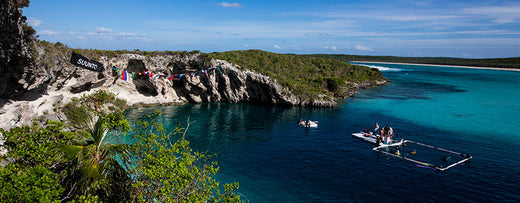
Freedivers ready to take the plunge at Suunto Vertical Blue 2016
36 freedivers from 20 countries are preparing for Vertical Blue 2016, the elite freediving competition held at the world’s deepest blue hole in the Bahamas. It starts on April 22 and runs for 11 days. Get a view from the inside here. Dean's Blue Hole has a depth of 202 m. © samovidic.com/ zooom.at
On the white sandy shores surrounding the deep, still waters of Dean’s Blue Hole waves of activity come and go.
Under the warm tropical sun, freedivers, competition judges, safety staff, photographers, media and organizers are preparing for Suunto Vertical Blue 2016, the most important depth diving competition of the year.
The athletes are putting the finishing touches on their training, or resting up and preparing their bodies with yoga and relaxation exercises. Diving down into the murky depths on a single breath requires total relaxation, which is more difficult to maintain under competition conditions.
Click here to learn about the different disciplines of competition freediving
Spectators look on as the competition gets underway. © samovidic.com/ zooom.at
Safety staff are busy finalizing protocols. Organisers are testing underwater cameras, including a new underwater drone that will follow each diver down and back again – a world first for a freediving competition.
We caught up with some of the players to give you a sneak peak behind the scenes.
The world champ
William is the first and only person to freedive to 101 m with no assistance. © samovidic.com/ zooom.at
Suunto athlete, world champion freediver, and competition host William Trubridge usually wins the top spot, which is more likely this year as his friend and rival Alex Molchanov isn’t competing this year.
The competition might still prove challenging for William.
“I've had a lot of recent injuries and sickness, so I am still not in top form,” he explains. “I'm treating this more as a warm-up competition for the season, but if I start doing good dives during the 11 days of the event then who knows?”
How deep do they dive? Click for a visual guide!
The island yogi
Kate runs a freediving and yoga school on an island near Bali. © katemiddletonyoga.com
Four weeks ago New Zealand record-holding freediver and yoga teacher Kate Middleton travelled from her tiny island home in Indonesia to tiny Long Island, the home of Dean’s Blue Hole, to focus on training for Vertical Blue 2016. The 27-year-old ocean lover is satisfied with her preparation.
“I’ve done all of the training that I can do beforehand,” she says. “Now I will benefit most from staying dry and resting up.”
For Kate, the competition is the pinnacle of the world’s freediving competitions. The professional organization, the robust safety system, the media attention and the level of competition make it special, she says. With no individual depth world championship in 2016, Vertical Blue is the most important competition of the year.
Read: The secret to freediving – relaxation.
Yoga helps freedivers to move fluidly and efficiently. © katemiddletonyoga.com
“All the activity is centred around the blue hole,” Kate says. “Pre- dive, most people are very quiet and focused. Post-dive everyone is really social and chatty. Everyone understands each other in that way. There's a lot of respect for where someone is at.”
Achieving her personal goals for the competition is one thing, but for Kate one of the main reasons she attends is for the community it offers.
“Freediving is a small sport so it’s rare that you're around so many people who have also devoted their life to this and to share something like that you really develop strong friendships quickly. Freediving brings everyone together.”
The judges
CarlaSue Hanson says its going to be a big 11 days. © Francesca Koe
President of AIDA International (Association for the Development of Apnea) CarlaSue Hanson is one of the judges at this year’s competition. To be a judge requires completing a specific AIDA course. Competition organizers pick judges according to their level of experience, something CarlaSue has in spades.
“The main responsibility of the judge is to ensure that all requirements of the rules of AIDA International are upheld,” she explains. “Safety is the main concern above all else.”
As AIDA president, CarlaSue knows many of the competitors.
“It does help to know the divers when tracking the results and also watching for any indications of stress or possible injury. I have a little record in my head about the past dives and it gives me some indication of what I might expect to see.”
Click to learn how to become a freediver!William Trubridge resting before a dive. © samovidic.com/ zooom.at
Like Kate, CarlaSue sees Vertical Blue as a prestigious event that attracts the world’s best freedivers.
“The unique setting and calm water of the lagoon provide for consistent conditions without excessive wind and current,” she says. “It’s also easier for all of us, as the competition site is so close to the shore so we don’t have to take a boat out to the venue.
“It is also one of the only competitions where we have spectators. The other athletes can watch their friends and rivals dive and we also have locals and tourists coming out to cheer and enjoy the competition.”
Chief of safety
Stephen Keenan runs a freediving school in Dahab, Egypt. © Francesca Koe
Competitive freediver and freediving instructor trainer Stephen Keenan is chief of safety this year. In previous years he has performed the role of platform coordinator so he knows well how to run a tight operation.
“My role is crucial to keep things running smoothly and to create a comfortable environment for the athletes to do their best,” he says.
Freedivers to watch
CarlaSue knows who’s who in the freediving world. She says there’s a lot of talent at this year’s event that she expects to do well.
Sayuri Kinoshita, Japan
“She won the overall women's gold medal at Vertical Blue 2015 and was also CNF gold medallist at the AIDA World Championship.”
Sofia Gomez, Columbia
At last year's competition she earned national records in the sport’s three disciplines: FIM, CNF, CWT.
Marianna Krupnitskaya, Russia
In 2014, Marianna was the world's number one ranked female freediver. Last year she became the Russian national depth champion.
Johnny Sunnex, New Zealand
Johnny won bronze at the AIDA World Depth Championship in 2013. He served as chief of safety at Vertical Blue 2014.
New to Vertical Blue
“We have some other athletes that are big names in freediving but are new to Vertical Blue: Aolin Wang and Jessea Lu of China, Italian Homar Leuci, Camilla Jaber from Mexico, Stephane Tourreau from France, American Ashleigh Baird and a local Bahamian Luke Maillis.”
CarlaSue expects many national freediving records to fall. At last year's competition 29 national records were broken by 12 freedivers.
Click here to read about last year's results and here to see this year's athletes.
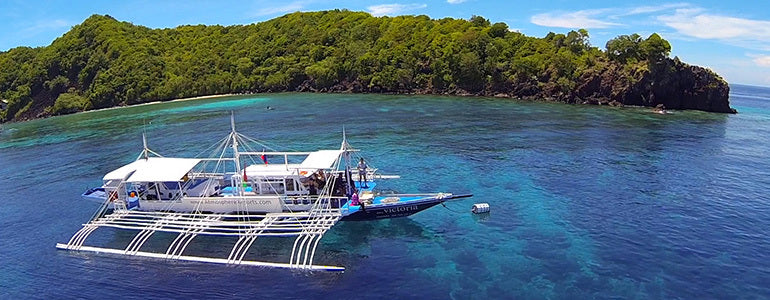
#DiveWithMe winner announced!
After a big response, we’re pleased to announce the winner of our #DiveWithMe contest – 24-year-old diver Theresa Torp! When she found out she’d won, her currently non-diving friend Anna immediately came to mind. The two have good times ahead! Theresa's dream is to swim with a whale shark. © Theresa Torp#DiveWithMe winner Theresa Torp and her friend Anna Sofie Starup have won an all-paid week-long trip to Atmosphere Resorts & Spa in the Philippines. The resort has a beautiful beachfront location on the island of Negros Oriental near Dumaguete. Anna will have the opportunity to complete a four-day open water diving course at the resort, and join her friend on some incredible dives. We asked Theresa about diving and why she picked Anna to join her. Congratulations! Feeling excited?
I can’t wait to experience the Philippines! The country has been at the top of my bucket list for as long as I can remember, and who knows, maybe I’ll get lucky and experience my first meeting with a whale shark as well!Theresa (left) and Anna (right) will travel to the Philippines this summer. © Theresa TorpSo, who is Theresa Torp?
I’m an occupational-therapy student and live in Denmark. When I’m not studying, I’m working my ass off as a sales assistant to save money for scuba diving and exploring the world whenever school “lets us off the hook”. When did your journey as a diver begin? Four years ago while travelling in Brazil I met the most amazing and inspiring people; a marine-biologist and a dive-instructor who didn’t consider scuba diving as just a hobby, but as a whole lifestyle and a big part of who they are. I was extremely fascinated about their way of living, and I’m pretty sure they’re the reason that scuba diving has become such a big part of who I am today.© Ulrika Kroon / Atmosphere Resorts & SpaYour most incredible dive experiences?
Every dive has it’s own story and it’s own memories, but some of my most memorable have been exploring the Cancún Underwater Museum, playing chicken with a huge and scary tiger shark at Cocos Island, rubbing a playful manatee’s belly in Crystal River, exploring enormous shipwrecks at Key Largo and kissing dolphins in the Bahamas. My greatest dream come true was diving side by side with hundreds of schooling hammerhead sharks at Cocos Island, about 550 km from the shore of Costa Rica.
© Bo Mancao Who is the lucky friend joining you? I met Anna Sofie at the first day of high school and we quickly became inseparable! A couple of years ago she moved to the other side of the country, but we stay in-touch and I still consider her as one of my dearest friends. When I heard about this amazing #DiveWithMe competition, she was the first and only person who crossed my mind! Not only will we get an opportunity to catch up in the most magical setting, I will introduce her to scuba diving, my biggest obsession. Even though I’ve experienced a lot of incredible dives, I’m certain that nothing could ever be compared to sharing it with her!
© Bo Mancao What would you like to show her underwater? That’s a difficult question as I’m looking forward to show her everything the ocean has to offer! I’m also really looking forward to show her the stunningly beautiful colours of the Coral Triangle and who knows, maybe I will get to share my first meeting with a whale shark with her – that would be a big dream come true.
Is she excited about the trip and learning to dive? I’m not sure if I’ve ever seen her more excited! Anna is one of the most joyful and adventurous people I’ve ever known and I’m sure that she’ll turn out to be an amazing scuba diver and dive buddy. Just as I’m sure that this trip to the Philippines will turn out to be an adventure of a lifetime!Lead image: © Ulrika Kroon / Atmosphere Resorts & Spa
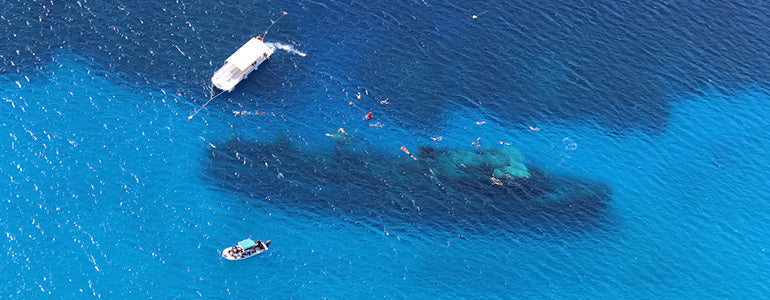
7 incredible shipwreck dives
For divers, nothing quite beats the experience of a wreck slowly coming into view as you descend into the deep. There is a sense of wonder at the fallen grace of a once great ship, and a feeling of awe at the loss of life. They are also often fantastic dive locations, having evolved into artificial reefs, attracting abundant sea life. Here are seven of the best.
U.S.S. Kittiwake, Grand Cayman Great for: wreck rookies
One of the most popular and accessible wreck dives around the world, the 76.6m long Kittiwake was purpose sunk off Grand Cayman’s Seven Mile Beach just a few years ago. It’s also been stripped clean of hazards such as doors and hatches. All five levels of the ship can be penetrated, depending on the certification you have.
Rainbow Warrior, New ZealandGreat for: Politically motivated divers
When French secret agents sunk the Greenpeace vessel in Auckland harbor in 1985, it caused a huge political scandal. Two years later the ship was scuttled at Matauri Bay in the Cavalli Islands to serve as a dive wreck and artificial reef to promote marine life. At a max depth of 26 m the Warrior is now home to a huge variety of aquatic life and is a world renowned dive site.
Bell Island, NewfoundlandGreat for: Adventurous divers
Bell Island is one of the few locations in North America that was under attack by German forces during the Second World War. In 1942, U-boats raided the island twice, sinking four iron ore carriers and destroying a loading wharf, killing more than 60 men. “Today, divers visiting Newfoundland’s rich waters can dive these remarkable wrecks that have transformed into stunning and colorful reef structures,” says underwater explorer and Suunto ambassador Jill Heinerth. Check out the video she created here:
‘Badewanne’, Gulf of FinlandGreat for: Undiscovered wrecks
Numerous wrecks lay on the Gulf of Finland’s sea bed, from 17th century merchant ships to battleships and submarines from the first and second world wars. During the latter, German sailors dubbed the Gulf of Finland ‘badewanne’ or bathtub. Today it’s the name of a team of Finnish explorers, scientists and historians dedicated to finding and preserving lost wrecks such as Torpedoboot T18. But if you’re hoping to dive there yourself, bad news: the team does not release the site locations to preserve their integrity.
Chepstow, EnglandGreat for: Underwater attractions
How can a lake on the border between England and Wales be home to a great bucket-list wreck dive? That was our question too. But after watching the video below from freediver Daan Verhoeven diving through a sunken plane, we think you’ll also want to add this venue to your list. The lake is home to a number of attractions, including a Landrover, Royal Navy Wessex Helicopter Mk3 and a British Aerospace Jetstream 200. There’s also a gnome garden if you’re into that.
HMS Hermes, Sri Lanka Great for: Sea life
Lying at a depth of 53m off Sri Lanka’s east coast is the Royal Navy Aircraft Carrier HMS Hermes, the first ship to be designed as an aircraft carrier. It’s a unique dive. She lies on her port side with many features still intact, including her tower and thanks to clear visibility you can also expect to see large tuna, grouper and jacks. Watch a video of a dive here:
The Yongala, Australia Great for: Visibility, sea life and features
At 109m, the Yongala is Australia’s largest and most intact historic shipwreck and offers incredible diving within the world heritage Great Barrier Reef Marine Park. She sank off the coast of Queensland during a cyclone in 1911, killing 122 people, a racehorse called Moonshine and a red Lincolnshire bull. With no telegraph facilities, she could not be forewarned of a storm. Expect to see abundant sea life including manta rays, sea snakes, octopuses, turtles, bull sharks, tiger sharks, and of course, some beautiful coral.
Lead image: This photo, “USS Kittiwake”, is copyright (c) 2013 to KatieThebeau and made available under an Attribution-Noncommercial-Share Alike 2.0 license.
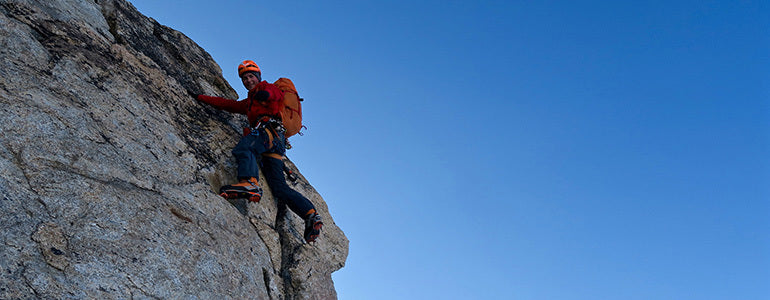
Finding the flow in the mountains
Top alpine climber Luka Lindič says learning to move fast and fluidly in the mountains has been the foundation of his success. © Aleš ČesenSlovenian climber Luka Lindič, 27, sees becoming a skilled alpinist as similar to building a house. With a strong foundation, the rest is possible. Without it, you’ll eventually run into difficulties. “It's really important to spend a lot of time in the mountains moving in all kinds of terrain, learning to be comfortable, because only then can you climb harder routes,” Luka says. “For me, building a foundation has been about climbing many, many relatively easy classic routes in the Slovenian mountains. “Many times I’ve realised I can do hard climbs, but if I don’t move a lot in easy terrain for a while then I lose this feeling of moving fluidly. You get stiff. You become slow. You don't have the flow to just move. I think it's really important to keep that.”
© Aleš ČesenHis approach of building the basics has clearly paid off. In 2015, he became one of the youngest people to win the prestigious Piolet d’Or Award, considered the “Oscars of alpinism”. Luka, and his two climbing partners Marko Prezelj and Aleš Česen won the award for their ascent of the north face of Hagshu (6515 m) in India.
Always coming back to relatively easy routes also reminds Luka why he fell in love with climbing in the first place. “I can’t deny that when I have a really ambitious project that’s on my limit it’s also stressful. If I would do only this, I would forget the feelings that originally brought me into climbing – the simple joy of being in the mountains.”
© Aleš ČesenLuka’s love of the mountains began as a child. Hiking is one of the biggest sports in Slovenia and his hiker parents took Luka whenever they went. He remembers walking past rock faces and looking up in wonder at the climbers scaling them.
It's really important to spend a lot of time in the mountains moving in all kinds of terrain, learning to be comfortable, because only then can you climb harder routes.
His curiosity grew and at 14 he joined his local climbing club and was fortunate to be mentored by some of Slovenia’s most experienced alpinists, particularly Marko Prezelj. They not only taught him the skills, but also brought him into the strong Slovenian climbing tradition.“We live in such a small place, a small community, and we meet day-to-day in crags because the distances are so small. That's one of the reasons we have so many good alpinists here. I’m very lucky.”
© Aleš ČesenOne of his toughest climbs was what was dubbed the “alpine ascent of the season” in 2014; the first free ascent of Rolling Stones on the north face of the Grandes Jorrasses, Mont Blanc massif. “Some people said it's wasn’t possible to do it in the style we did,” he says “But it was just a question of self-confidence.” This summer he is going to Pakistan and has climbing permits for Broad Peak (8051 m) and Gasherbrunn IV (7925 m). However, he wants to keep his plans open. “The reason is I want to be more free and not fix too much before I go,” he explains. “Many times when you are in big mountains you need to change your plans because of different factors. It's really important you feel free to do so, to play, to follow some crazy ideas, to think out of the box, and not be too fixed.”
Luka's climbing achievements:
Bhagirathi IV (Garhwal Himalaya, India) 6200 m, September 2009. Bhagirathi III (Garhwal Himalaya, India) 6546 m, September 2009. Bhagirathi II (Garhwal Himalaya, India) 6612 m, September 2009. Hagshu north face (Zanskar, Himalaya, India) 6657 m, September 2014.
Main image: © Aleš Česen
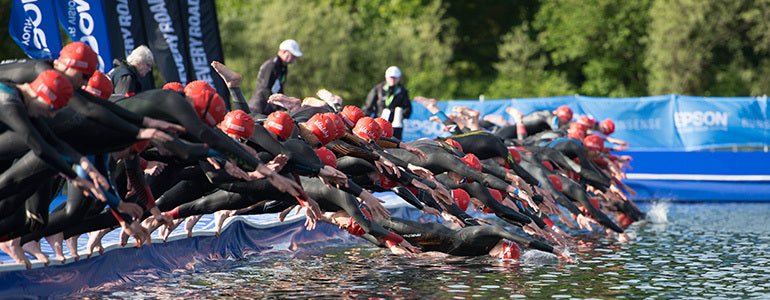
Only Human
Suunto UK has partnered up with the Columbia Threadneedle World Triathlon Leeds, England. We recently ran a contest to find a lucky competitor to share his training tips and the experience of taking part. The winner is Dan Blackburn and this is his second update about his preparation for the big day this June.
"The Easter eggs have been eaten and we’re half way through April. That means one thing – the one big push before WTS Leeds.
Now is the time for focus. For determination. For a bit of selfishness.
I’ve been flat out at work recently, and carrying a bit of an injury too (a sore calf after my last 10k). And that means I’ve been neglecting the training and nutrition a bit.
But having had a few days off over the recent bank holiday weekend to recharge the batteries (I knew I was tired but never expected to sleep for 12 hours straight on Good Friday) I’m feeling refocused and ready to redouble my efforts.
So for the next couple of months I’m going to be a bit more selfish. I’m going to take lunch hours. I’m going to leave on time(ish). I’m going to change things up a bit.
It’s the perennial quest for balance – work, family, training, nutrition, rest, sleep – something I fail to master most of the time.
It’s easy to get cross about it, and easy to make excuses, but as my coach always points out, you’ve just got to be objective about it – look at it dispassionately, in the cold light of day and it’s obvious what you need to do.
I work too much. That’s the long and short of it. So that’s where I’m going to make a few changes in the run up to the race. A few shorter days and lunch hours don’t have to make me any less effective at work.
Ultimately, it’s about admitting to myself what is blatantly obvious to everyone else – I’m only human.
So with my injury, I’ve been sensible. My natural inclination is to push on through. But instead I listened to my coach and triathlon buddies and pulled out of my first race of the season - I just couldn't risk doing 15k at race pace in the Clumber Park Duathlon.
And I’ve started stretching and foam rolling properly. I know this should have been an integral part of my daily routine, but if I'm honest it's the first thing to fall by the wayside when I'm busy. So let this be a warning - do as I say, not as I do! Get stretching, get rolling, get yourself a massage.
The second realisation is more obvious, but no less frustrating. Even with a proper training regime laid out and even after quitting drinking, I am a thirty something office monkey, not a pro triathlete. Unlike the Brownlee brothers I have a job that eats up 50 or 60 hours a week, plus a wife and two young kids who need my time and attention.
Maybe it’s the break from work but I feel a bit more zen-like than I have for a while. I have a plan, I know what I need to do, but I’m not going to beat myself up for failing to hit Brownlee-esque heights.
And with those parameters in mind, I’m going to give it my very best shot.
So armed with a new sense of perspective, I did a quick recce of the WTS Leeds bike course this weekend just to see what lies in wait for me. It’s a proper bike course for proper bike riders - with loads of undulation and very few moments when you can relax. It’s hilly, it’s technical, it’s going to be tough. So make sure you’re putting some tough bike sessions in!"
Read more
Meet the everyman who’s taking on the World Triathlon, Leeds
10 Ambit3 hacks for triathletes

How to bring mindfulness to the trail
© Sven Musica
With her mother, father, and aunt all distance runners, it was inevitable Meg MacKenzie would follow suit. She grew up on a farm, and enjoyed cross-country through her school years. When she was 25, and without training, she came second in the Three Cranes Challenge stage race, and was first in her age group. “From there I started thinking about trail running more seriously,” she says.
She began working with a coach, got sponsorships and has since had a string of podium and first place finishes in stage and trail running races. Her specialty is mid-distance racing.“I don't know what it is but I keep entering those shorter, sharper races,” she says. “You can race more if you do the 30 k to 40 k distance. And I love racing. That's part of why I do it. I crave competition.”Meg also coaches other runners to reach their dreams. She practices meditation daily and uses mindfulness in her approach to life and coaching. “I've had a lot of experience in the trail running community and “I can see that women in particular struggle to get started, and if they do get started they struggle to maintain what they're doing,” Meg says. “That spurred me to help people, particularly female runners.”Many trail runners rely solely on mental toughness to push themselves, but there are other ways of approaching training and racing. “Listen to your body and really try to get a mind-body connection going because that's the most important connection you can have. Pushing through isn't always the best option.”
Meg's three tips for bringing mindfulness to the trail:
Create your context for each training session
By consciously determining what you want to get out of each session, you will avoid tumbling along in an unconscious blur of day-to-day slog. It takes five minutes, and when you get better at it, one minute. Before you step out the door ask yourself what you want to get out of the next few hours. Maybe it’s an escape after a long day. Maybe you want to learn more about your downhill running. Perhaps you need to relax and take it easy. Or maybe you want to consciously push yourself to the correct splits and times you laid out for yourself. Whatever it is, take a quiet moment to determine it consciously before you set off.
Forgive yourself
Forgive yourself for any training or racing that didn't go how you wantedAcknowledge what happened, give up the resistance to what happened, let go – it creates freedom. And make a decision to move forward. This will allow for more flow and energy rather than getting stuck in one off day, week, month or race.
Drop the story
The story is everything we create in our heads about the present moment and most of us allow that to stop us. For example, you would like to go for a run BUT its a bit rainy and cold, you don't have quite enough time, you really want to BUT maybe you could go tomorrow when the weather is better, or when you get out of work a bit earlier. The story is everything after BUT.
The 'is-ness' is that, yes, it is rainy and cold. And you have promised yourself to go for that run. So what is your decision? If you act from is-ness, you acknowledge that it is cold and rainy and you make a decision to go anyway because that is the best decision to make out of what IS. So drop the story and move on in the present!
Meditate
Meditation is a powerful tool to use before or after a race or as part of your daily life. It allows you to create space in your mind and be more present. This, in turn, allows more flow, as you will be more conscious with the present moment, instead of rushing through another day of training stuck in the future worrying or feeling anxious about the past. There are lots of guided meditations out there, try one, start small and just be.










































































